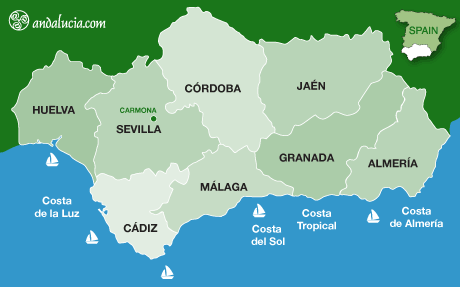
HISTORY OF CARMONA
by Saskia Mier
Carmona is one of the most historic cities of the province. Its different denominations proclaim the role of the city in the different invasions. Its name is of Semitic origin, 'Kar' meaning 'city', and is explained by its probable Phoenician foundation. The Romans called it 'Carmo', and the Arabs 'Qarmuna'.
Although a few archaeological sites are present in the area dating to the Palaeolithic era, there are many more from the Neolithic period. A Carthaginian colony of great importance was developed, with remains of walls found conserved at Puerta de Sevilla.
In 206 A.C. Carmona is conquered by the Roman Empire, becoming one of the most important urban centres of the Bética, called 'Carmo' and surrounded by a walled enclosure. Great architectural and sculptural remains are still present today, including the impressive Necropolis.
During the Moorish era, Carmona became capital of one of the Kingdoms of Taifas, in the eleventh century. The defensive system was reformed, and palaces, mosques and other notorious buildings were built.
The conquest of Fernando III 'El Santo' took place in 1247, was delimited by Alfonso X 'El Sabio' and favoured by Pedro I 'El Cruel', who frequently visited. In 1630, Felipe IV granted Carmona a city title.
